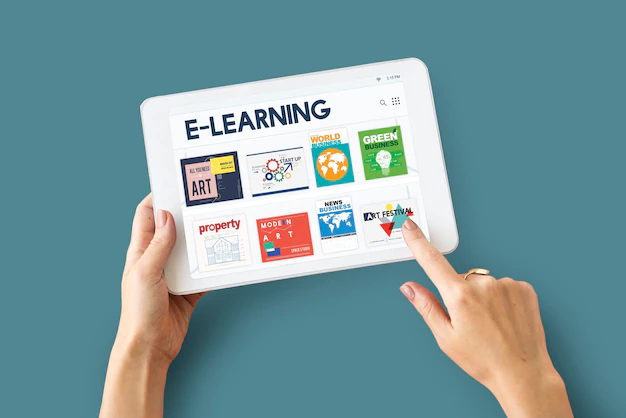How to Become a Successful Instructional Designer in 4 Steps

If you’re interested in technology and education, you may want to learn about the requirements to become a successful instructional designer.
Instructional designers research and prepare learning materials to help others achieve successful educational outcomes.
These professionals use their technical skills and knowledge of learning methodologies to create engaging educational experiences.
In this article, we explain what these professionals do, describe the steps to become a successful instructional designer, outline helpful skills for this profession and provide their average salary.
What is an Instructional Designer?
You’ve heard the term “instructional designer,” but you’re probably still wondering exactly what an instructional designer does.
Instructional designers create effective, engaging learning experiences.
They draw on best practices from education, design, psychology, systems theory, and creative writing to create eLearning, face-to-face workshops, job aids, and other performance support solutions.
Learning experiences that are effective and engaging are created by instructional designers.
They use best practices from education, design, psychology, systems theory, and creative writing to create eLearning, face-to-face training, and online courses.
Skills for an instructional designer
Instructional Designers’ work is mostly computer-based and necessitates knowledge of education and learning. Some of the skills you can develop to help you to become successful a instructional designer:
Creativity: Instructional designers use creativity to find new ways of presenting content to learners. Creating visually stimulating and interactive content can increase engagement and improve outcomes.
Research: It’s helpful to have research skills so you can stay updated on industry trends and incorporate them into new educational solutions.
Instructional designers also use these skills to research the course content to make sure it’s accurate.
Time management: Instructional designers frequently work on several projects at the same time, which may be in different stages of development. Time management skills are essential to keep each project moving forward and get it completed on time.
Communication: Being a good communicator can help an instructional designer keep the audience’s attention so they can meet the learning objectives of the course.
Instructional designers also use written communication skills to create high-quality educational materials.
Also read: Top 5 Instructional Design Jobs You Should Know
How to become successful a instructional designer
While most employers don’t require instructional designers to have a specific degree or certificate, it’s important to have the necessary skills and knowledge to fulfill the expectations of this role.
Here are the steps you can take to become a successful instructional designer and also find employment in this field:
1. Learn about methods, principles and theory
One requirement to succeeding as an instructional designer is understanding the theories and frameworks of the field.
To become a successful instructional designer make decisions that are guided by theories such as Merril, ADDIE Model, Gagne and Bloom’s Taxonomy.
It’s also important to understand the science of why and how people learn so you can apply this knowledge in your instructional designs.
These theories include specific learning theories, such as situated cognition theory, inquiry-based learning and discovery-based learning.
Read articles or books, listen to podcasts or take online courses to learn more about these methods and theories.
2. Become proficient with relevant software and tools
Many employers require entry-level instructional designers to know how to design e-learning experiences using standard industry tools.
Software programs used in instructional design include Adobe Creative Cloud, Lectora, Adobe Captivate and Articulate 360.
Practice these programs to become comfortable using them to create materials. It’s helpful to watch online tutorials or how-to videos to learn the features of these programs.
This practice can help you become proficient in the use of these tools.
3. Develop essential skills
To become a successful instructional designer, there are many responsibilities attached, such as researching new initiatives, developing curricula and courses and interviewing experts.
It’s important to develop a relevant skill set so you can perform those tasks successfully.
Communication and writing skills are vital for conveying objectives and messages to an audience.
Instructional designers also use interpersonal, organization and problem-solving skills to manage projects with team members and matter experts. Other essential skills for an instructional designer include:
- Creativity
- Technology
- Video development
- Graphic design
- Programming
4. Build a portfolio
Typically, instructional design employers focus on a candidate’s experience and skills, rather than their academic qualifications. Gain relevant experience by pursuing internships and volunteer opportunities.
While doing so, put together a portfolio of instructional materials you have designed or helped create. Choose a variety of materials to showcase your skills and knowledge.
Consider creating a professional website so you can provide potential employers with a link to your recent work.
5. Apply for jobs
After gaining skills and experience, you can begin to apply for instructional design jobs. You can prepare for the hiring process by making a resume and practicing your interview skills.
When putting together your resume, choose relevant skills to highlight, such as technical skills, curriculum development and problem-solving.
Prepare for your interview by practicing your answers to frequently asked questions, such as why you chose the field, what experience you have and what value you can bring to the company.
Practical Skills for Instructional Designers
Project Management: Especially for instructional designers who oversee teams or who manage the work of individual contributors during the design process, mastering common project management skills—such as negotiation and leadership—can be incredibly beneficial.
Teaching and Training: Though instructional designers are not required to have advanced training in education, having some experience or exposure to these practices can inform your design development.
It will also be beneficial when training relevant parties to implement your instructional design with their learners.
Technology: Technology is now a vital skill for professionals across industries, and instructional design is no exception.
Knowing how the digital components of the instruction you create work—including interactive assessment products, instruction delivery systems like Blackboard and Moodle, and more—will allow you to better approach these aspects during development.
Multimedia Design: Having web, graphic, and/or multimedia design skills can set instructional designers apart when it comes time to build digital materials to complement instruction.
Area-Specific Content Knowledge: Instructional designers with a background in a certain topic often do well building instruction for that specific area.
This knowledge means that you will likely be familiar with the audience, will be able to speak the same industry-based language as the SMEs, and will be able to contribute to the content development itself.
Conclusion
In conclusion, becoming a successful Instructional Designer is not a walk in the park. It requires hard work, dedication, and having the right skills and knowledge.
The steps outlined above will help you on your journey to become a successful Instructional Designer: gain experience, build relationships, stay up-to-date with the latest trends, and focus on your own development.
With the right attitude, dedication, and perseverance, you can become an expert Instructional Designer and benefit from a rewarding career.






